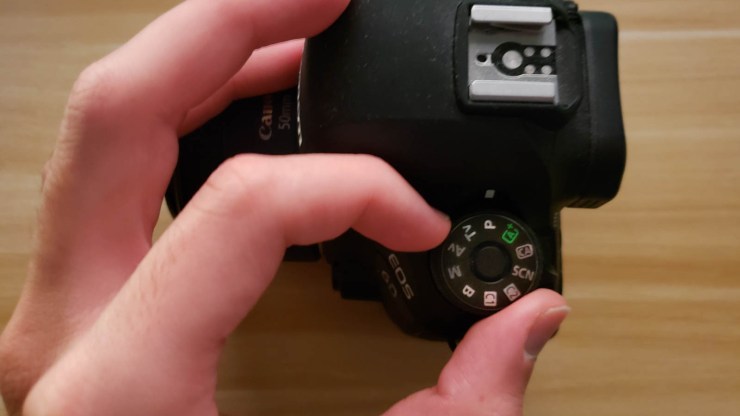Have you ever picked up your camera and wondered what that “P” meant? You know, that mode you tried once and never again?
Program mode can be a powerful tool, especially for beginners. But how is it different than Manual mode?
The basics
Starting from the basics, let’s compare the Auto mode with Program mode.

Auto pretty much means automatic. The camera does most of your work, leaving you to think about options to point the camera at and zoom intensity. Auto mode automatically sets the flash, ISO, white balance, shutter speed and aperture.
On the contrary, Program mode is more flexible (although it has some automatic features). Program mode is also commonly referred to as “programmed exposure” or “programmed automatic.” Dialing in while in this mode gives you control over numerous settings that are unavailable in Auto mode.
Controlling the flash
While in Auto mode, your camera will instantly fire a pop-up flash whenever it deems fit. Not enough light means an instant flash from your camera, which might lead to unwanted encounters. Luckily, program mode allows you to do the exact opposite!
It allows you to use flash at will, and it also shows a shake warning or a flash icon as a subtle recommendation. You can even select the flash mode (rear curtain, red eye and others).
Controlling shutter speed and aperture
Program mode also allows the usage of shutter speed and aperture. Your camera will automatically give you a good combination of aperture and shutter speed, giving you a gorgeous amount of exposure.
However, the shutter speed of your camera will depend on the specification of your camera (of course). Program mode allows you to choose various options of shutter speed and aperture.
Just spin the dial, press the rocker switch or arrow to achieve a lower shutter speed. However, if you want to increase your depth of field, move the dial (or your camera’s version of it) in the opposite direction.
Program mode can be seen as the bridge between Auto mode and Manual mode. Even if you have mastered Auto mode, jumping straight into manual mode will only confuse you.
Which is pretty much why program mode was created. It allows you to start fiddling with ISO, shutter speed, aperture and others. Being the pillars of photography, you should get the hang of aperture and shutter speed as soon as possible.
Adjusting these settings and balancing out may be hard at first, but it will be easier after proper practice.
Differences with manual mode
Program mode is just Auto mode with more options. This means it’s similar to Manual mode. But there’s a couple of key differences.

Starting from how the camera works to the available options, these small details bring impact to the “bigger picture.” In Program mode, the camera will still automatically set the option for you. While in the Manual mode, you are on your own.
Manual mode has no automatic settings (unless you utilize Auto ISO), making it the most adjustable or flexible setting on your camera. Manual mode is the best way to prove how good you are at understanding and using the settings on your camera.
Imagine, Program mode, but having to adjust everything by yourself. Quite overwhelming, right? Luckily Program mode serves as the perfect transition toward Manual mode, giving you time to get used to adjusting settings on-the-go.
Get better control over Auto
So, if you’re new to photography and would like to transition to Manual mode or maybe just want better control over a few settings unavailable in Auto mode, then try out Program mode!
Tell your story with the second annual Visual Storytelling Conference!
Experience four days of interactive, online training sessions featuring a range of educational content with experienced photographers and content creators. This free event kicks off with a series of technical boot camps to build essential skills, followed by live, online sessions on photography, video, business and social media. Join live from March 10-13, 2022!
